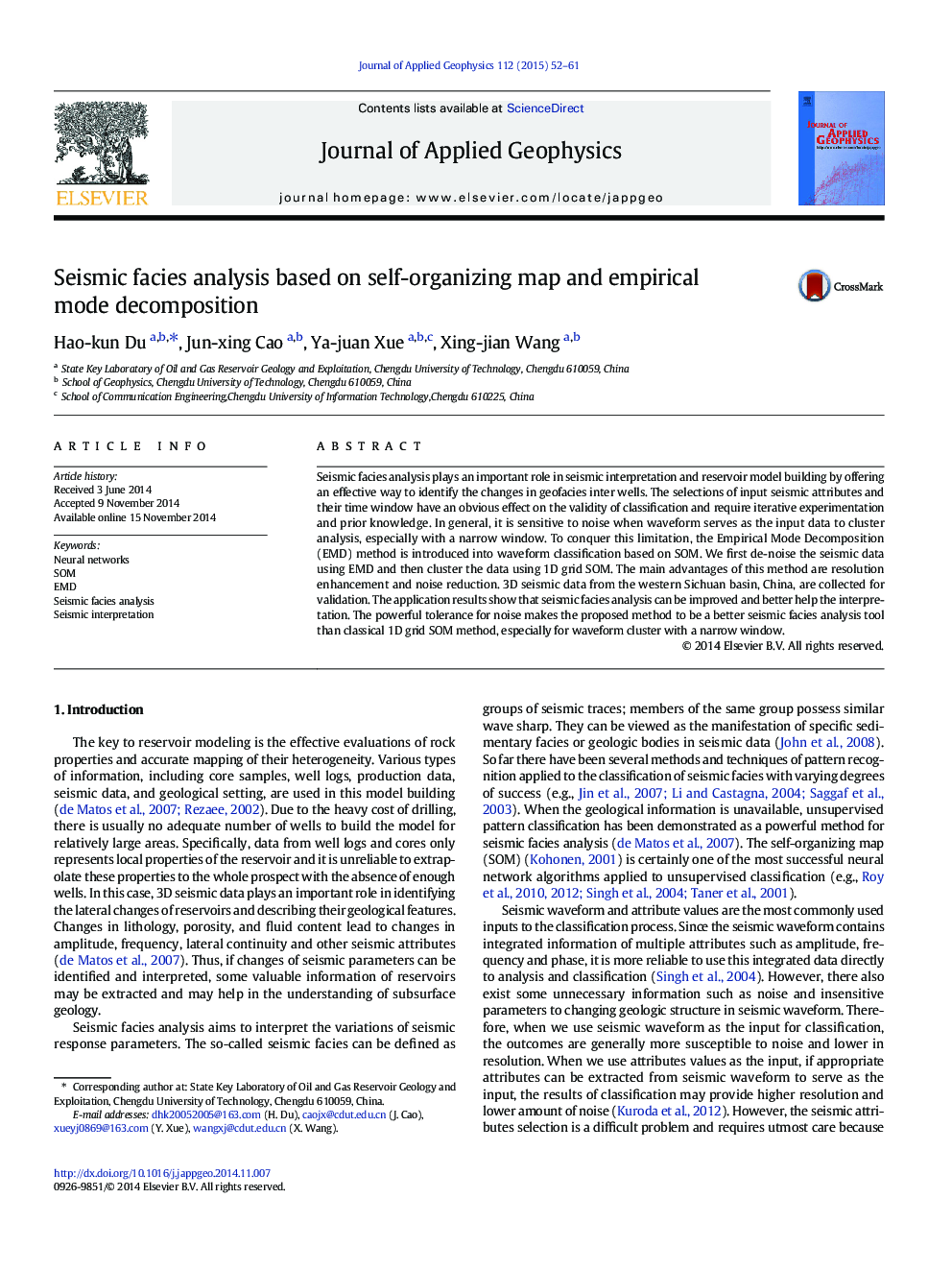| کد مقاله | کد نشریه | سال انتشار | مقاله انگلیسی | نسخه تمام متن |
|---|---|---|---|---|
| 4739998 | 1641139 | 2015 | 10 صفحه PDF | دانلود رایگان |
• The EMD combined SOM are applied to the waveform classification.
• The EMD-based SOM is less sensitive to interpretation noise.
• Real seismic data from western Sichuan basin is collected for validation.
• The EMD-based SOM is proved to have better effects in waveform classification.
Seismic facies analysis plays an important role in seismic interpretation and reservoir model building by offering an effective way to identify the changes in geofacies inter wells. The selections of input seismic attributes and their time window have an obvious effect on the validity of classification and require iterative experimentation and prior knowledge. In general, it is sensitive to noise when waveform serves as the input data to cluster analysis, especially with a narrow window. To conquer this limitation, the Empirical Mode Decomposition (EMD) method is introduced into waveform classification based on SOM. We first de-noise the seismic data using EMD and then cluster the data using 1D grid SOM. The main advantages of this method are resolution enhancement and noise reduction. 3D seismic data from the western Sichuan basin, China, are collected for validation. The application results show that seismic facies analysis can be improved and better help the interpretation. The powerful tolerance for noise makes the proposed method to be a better seismic facies analysis tool than classical 1D grid SOM method, especially for waveform cluster with a narrow window.
Journal: Journal of Applied Geophysics - Volume 112, January 2015, Pages 52–61
